Written by Chris
The Galapagos Islands are an animal-lover’s dream. No only are they home to many many species that you can find no where else in the world, but the place is simply teeming with animal life and everything is so docile that you can walk right up to it and introduce yourself. Everywhere you go you are tripping over some rather large life-form. It is almost like going to the zoo except you are in the cages with the animals and they don’t even mind. Get ready for a quick pictorial overview of the different animals Mindy and I encountered on the Galapagos Islands. Most, but not all, can only be seen on the Galapagos Islands.
On the land
Land Iguana
Marine Iguana
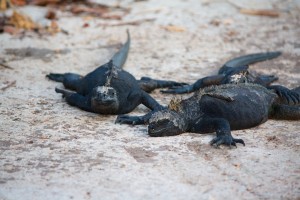
They swim in the ocean and eat seaweed. They crawl back on land where they warm up and use the heat from the rocks to cook the seaweed in their stomachs. Some get red and green highlights on their skin depending on the pigment in the seaweed they eat.
Lava Lizard
Charles Darwin
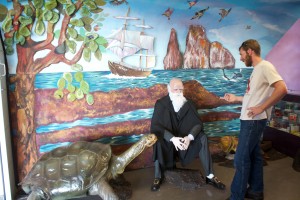
These guys were everywhere from the shops, to the street names, to the research centers, and he even has animals and a whole island named after him. I gave him a good talking to.
Galapagos Tortoise
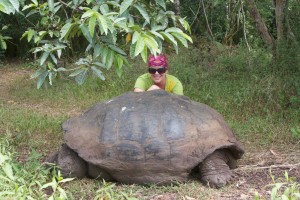
They come in 10 species on the islands and can grow up to 6′ long, 600 lbs., and 180 years old. If I hadn’t been ever-vigilant, Mindy would be in jail for attempting to smuggle them home.
Sally Lightfoot Crab
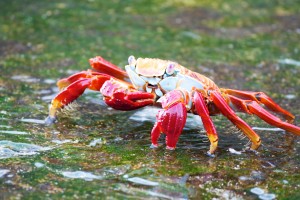
These crabs were on the rocks near the shore. They are born black as the volcanic rock and progressively become brighter and more colorful as they get bigger, stronger, and more badass.
Galapagos Sea Lion
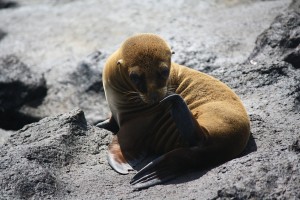
They were literally everywhere we went from the beaches to the harbor to the benches in town to the decks of ships. Very curious, very docile, and newborn pups everywhere.
Galapagos Cow
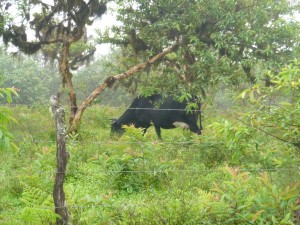
They floated here millions of years ago on primitive canoes they fashioned to explore the seas. They were the most intelligent species on the islands until man discovered them and enslaved them for their soothing sounds.
In the air
Pelican
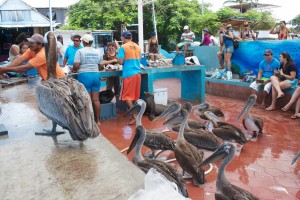
Big birds, decent at diving for fish, and even better at begging for them. We saw one swallow a live fish whole and watched it wriggle all the way down its gullet.
Swallow-tailed Gull
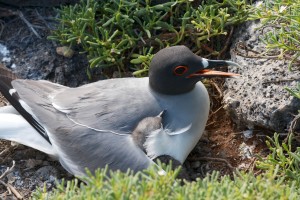
The only nocturnal sea bird and endemic to the galapagos. We saw a few that were being kept up all day by their newborn chicks.
Frigate Bird (Pirate Bird)
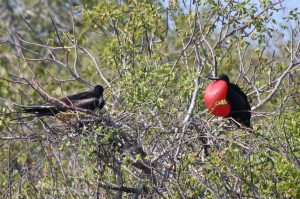
The bullies of the skies, these guys get their food by punching other birds in the stomach and taking the fish they cough out. The have an inflatable red pouch when they are attracting a mate and if they fall in the water, they will drown.
Galapagos Hawk
Albatross
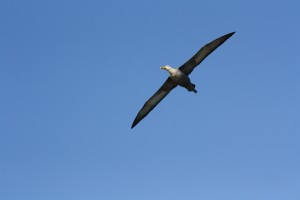
They have a wingspan of about 7′ and do this weird beak fencing competition when mating. They are sometimes too heavy to take off and have to jump off a cliff to get going.
Flamingo
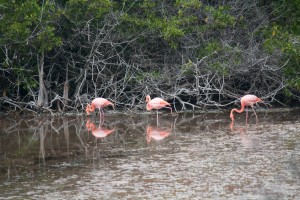
Your standard flamingo, pink and all. Many got wiped out during an unusually strong El Nino about 20 years back and introduced cats and rats are eating their eggs. Now they number only in the 100’s on the islands.
Blue-footed Boobie
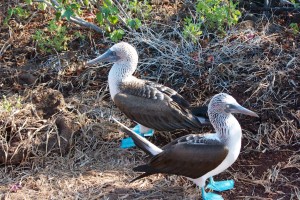
My favorite of the Galapagos. Blue-footed boobies dive for fish from about 50′ up and sometimes do so in synchronized packs. They have a crazy honking, whistling, dancing mating ritual and the color of their bill and feet is exceptionally rare in the animal kingdom.
- Diving boobie step 1
- Diving boobie step 2
- Diving boobie step 3
Red-footed Boobie
Finches
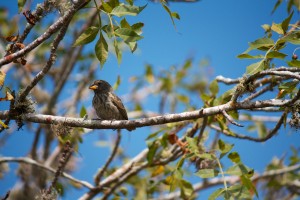
These are the guys that really triggered Darwin’s insight that led to publishing his “Origin of Species” when he found different species were adapted to each of the different islands. About 15 species have been identified including one that uses its beak to crack nuts, one that makes tools to pull insects out of trees, and one that sucks the blood of Boobies.
Unda da sea
Fishies
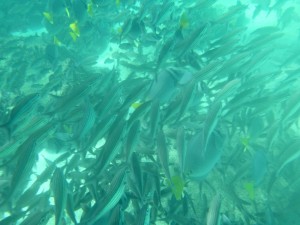
Lots and lots and lots of tropical fish. I couldn’t name many, but we did see Gill from finding Nemo.
Starfish
Stingray
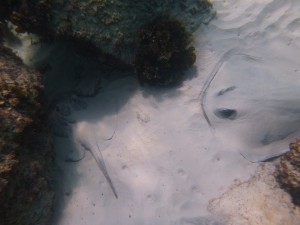
They hang out on the bottom and stir up stuff in the sand to eat. They look like the vacuum cleaners of the ocean floor.
Eagle ray
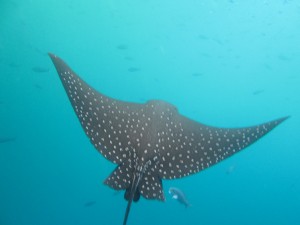
We saw many eagle rays gliding through the water sometimes solitary and sometimes in packs of 3 or 4. Many had wingspans up to 6 feet across.
Sharks!
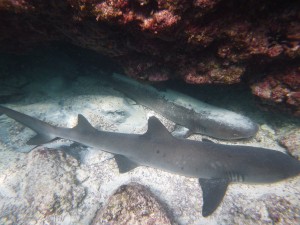
We saw white- and black-tipped sharks up to 4′ long and some Galapagos sharks that were up to 6′. We even saw some smaller hammerheads. Not so scary when they’re napping.
Sea Turtle
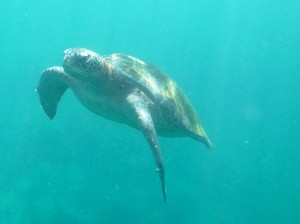
We saw loads both from the surface and while snorkeling, including one with a shell 5′ long. We even saw the tracks of one on the beach. They are huge and serene and the sea lions like to harass them.
Where do I put the penguin?
Its a bird, it spends its time in the sea, but I took the picture on land…
Galapagos Penguin
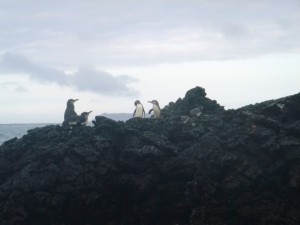
These guys are on the small size for a penguin, but they are the only ones found in the northern hemisphere. We were about 50 miles south of the equator when we spotted these, so that remains to be proven.
In the end, I think we saw every possible animal that exists on the islands with the exception of the Cormorant bird who was out of town when we came to visit. Before the trip, I was aware of the scientific significance of the islands and that they had big turtles, but little else. I have taken away a profound appreciation for how incredibly unique the life on the Galapagos islands are and also and appreciation for its fragility and how much must be done to protect it.
As we were waiting on the pier at dawn for our boat ride back to the mainland, I sat and watched an adolescent sea lion playfully tug at a rope dangling from a boat right below me. I got to wondering if this is what the whole world used to be like; packed full with a diversity of life, before mankind started eating, plowing, harvesting, and multiplying as much as we possibly could. Go ask your grandparents, I guess, and see if they remember the stories their grandparents told them.
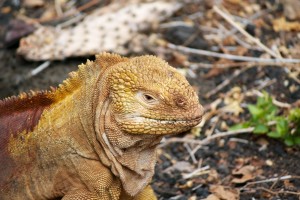
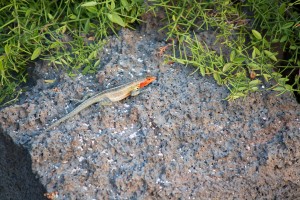
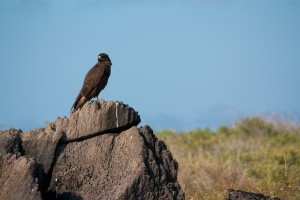
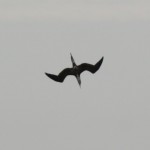

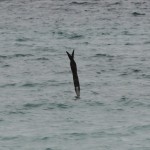
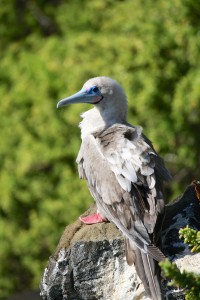
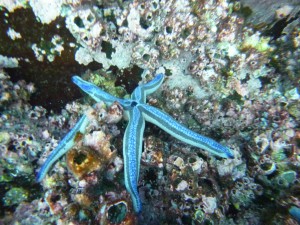
Thank you so much for the biology lesson! The pictures and commentary are fantastic!
Keep it coming! Be safe!
Love ya, Pattie
I think I may want to take a trip there. Half the animals you shared I had never heard of. What was the plant life like? Love to you both, Mom